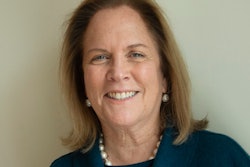At this time, higher education institutions, national organizations, and legislators across the country are advocating to double the Pell grant as Congress shapes its reconciliation package. This represents a transformative opportunity for institutions of higher education — community colleges, publics, and independents alike — to improve enrollment of lower-income students at a time when they continue to experience the most adverse impacts of the pandemic.
Low-wage jobs dried up during the pandemic, and millions of additional students and families entered poverty. In parallel, FAFSA completion rates dropped by 12% for seniors from the 2021 graduating class — and college enrollment plunged for 2020's high school seniors.
While doubling the Pell grant represents a critical step, colleges and universities must also do their part with concrete efforts to ensure the thousands of talented students from lower-income backgrounds have a clear path to apply, enroll, and persist toward graduation. We don't have time to waste as the significant number of students who deferred on or delayed their postsecondary dreams are less likely to return to higher education the longer they wait to enroll. Dr. Eric F. Spina
Dr. Eric F. Spina
As a Steering Committee member for the American Talent Initiative — the alliance of high-graduation rate institutions striving to graduate 50,000 additional low-income students collectively — I often speak on the imperative to reverse these downward trends. It is critical not only for individuals' lives but also to create more equitable and sustainable economic recovery from the pandemic.
As president of a university with a modest per capita endowment, I advocate that some strategies — like the ones that we have used at Dayton to increase Pell enrollment from less than 10% of the entering class a decade ago to 20% last fall — are possible for any school.
Here are three steps colleges can take to support, and ensure the success of, the students most impacted by the pandemic:
Be transparent about costs. College is a four-year investment. Yet, much of higher education continues outreach to students based on one year at a time. When unexpected costs arise, including hidden fees, it can force students to drop out. Like the one at the University of Dayton, a fixed net-price tuition plan can yield strong results. For us, record enrollment, retention and graduation rates — and student loan borrowing that decreased for students of every race and in every socioeconomic background. Under the plan, we have no extra fees and tell students upfront their costs for all four years.















